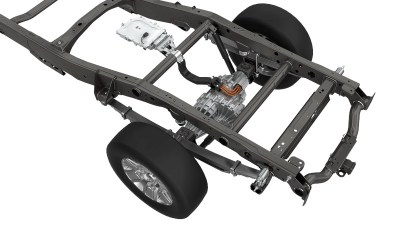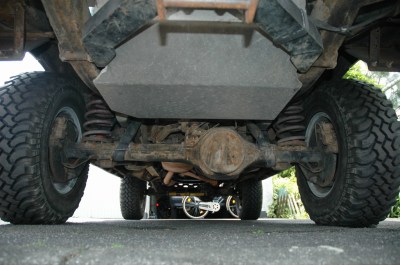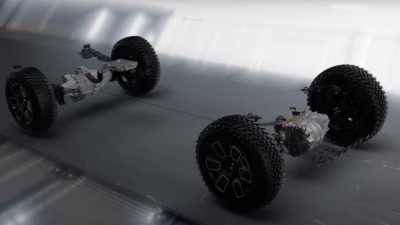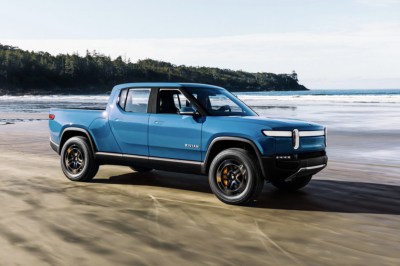Magna Announces Simple Drive Solution For Electric Pickup Trucks

Thus far, the majority of electric cars on sale have been aimed at commuters, fitting into the sedan and SUV segments of the marketplace. Going forward, there’s a very real need for electrification to touch the whole spectrum of automobiles, and that includes work vehicles like pickup trucks. A company called Magna have recently thrown their hat into the ring in just this space, developing a simple drivetrain that can be readily installed in pickup trucks without major modifications.
It’s All About The Form Factor

The aim of Magna’s eBeam technology is to make it easier to build electric pickup trucks and other related work vehicles. The basic concept is one of an electric motor drive unit built into a form factor that mimicks that of traditional beam axles, commonly used with leaf spring suspension designs in most pickups. This has the possibility of being a drop-in motor solution for a wide variety of trucks, the vast majority of which use broadly similar rear suspension setups. By simply changing the axle shafts and spring mounts to suit, Magna’s eBeam motor can be fitted to virtually any pickup. The eBeam setup is designed to work with OEM braking and suspension systems, though regenerative brake assist is likely a possibility as well.

The eBeam is a rear-drive solution only, of course, though it need not be limited to only two wheel drive trucks. Magna have already developed a series of electric drive solutions that can be used up front in order to handle four wheel drive, something often considered a must in the truck market. This obviously necessitates a second motor and associated control hardware, but avoids the hassle of differentials, transfer cases and driveshafts typical of traditional four-wheel drive systems.
The line of eBeam motor drives is slated to come in three different combinations. A single-motor drive, a single-motor drive with two-speed gearing, and a twin-motor drive with torque vectoring. Power ranges are slated to be from 120 kW (160 hp) up to 250 kW (335 hp). This is roughly on par with existing engine choices in most low-to-mid market pickups, though falls short somewhat compared to the most powerful truck engines currently on the market which are pushing in excess of 400 hp (~300 kW). Against this, electric motors have the benefit of delivering maximum torque right from zero RPM – a major benefit when it comes to pulling heavy loads. It’s likely that for many jobs, an electric powertrain of slightly lesser peak power would nonetheless fare well against a petrol or diesel competitor.
Currently, Magna are marketing the eBeam axles towards automakers, hoping to secure a slice of the not-yet-mainstream electric pickup market. Nevertheless, the homebrew conversion scene is a lively one, with enthusiasts taking whatever parts are available to create their own electric rides. It’s easy to imagine there’d be a healthy market in selling such conversion parts for popular older trucks, such as Ford’s F-series and older Rams and Silverados.

Regardless of the target vehicle, however, the Magna eBeam is not an all-in-one solution. Although it solves the problem of how to drive the rear wheels with an electric motor, that’s all it does. Figuring out a battery solution, charging, and other such concerns are left as an exercise for the buyer.
For the dedicated gearhead, hacking in some salvaged parts from crashed EVs would likely get one most of the way there. For automakers, however, significant design effort is still required to take platforms originally designed for fuel tanks and big combustion engines, and shake everything around until it fits.
More likely, we’ll see electric pickups designed around battery packs from the ground up, for safety, packaging and performance concerns. The market has a heavy focus on the range of electric vehicles, and this is dependent on battery size and performance. While the eBeam design makes for a drop-in rear drive solution, vehicles hoping to compete in the marketplace will still need well integrated battery solutions if they’re going to convince buyers to adopt.

Overall, the eBeam is an interesting product, though one that seems better suited to a thirsty conversion market rather than established automakers. While one can appreciate an integrated rear drive motor solution, it’s something that’s well within the design abilities of just about any top-20 automaker, so we don’t know why they buy it externally. The real challenge lies in the integration of electric drive systems with the rest of the vehicle, and that’s something that a beam-axle motor can’t solve.
Whether Magna’s hardware takes off in the industry depends on what automakers themselves have been developing behind closed doors, and one would imagine they’d started with the motors a long time ago. As always, time will tell.
Post a Comment